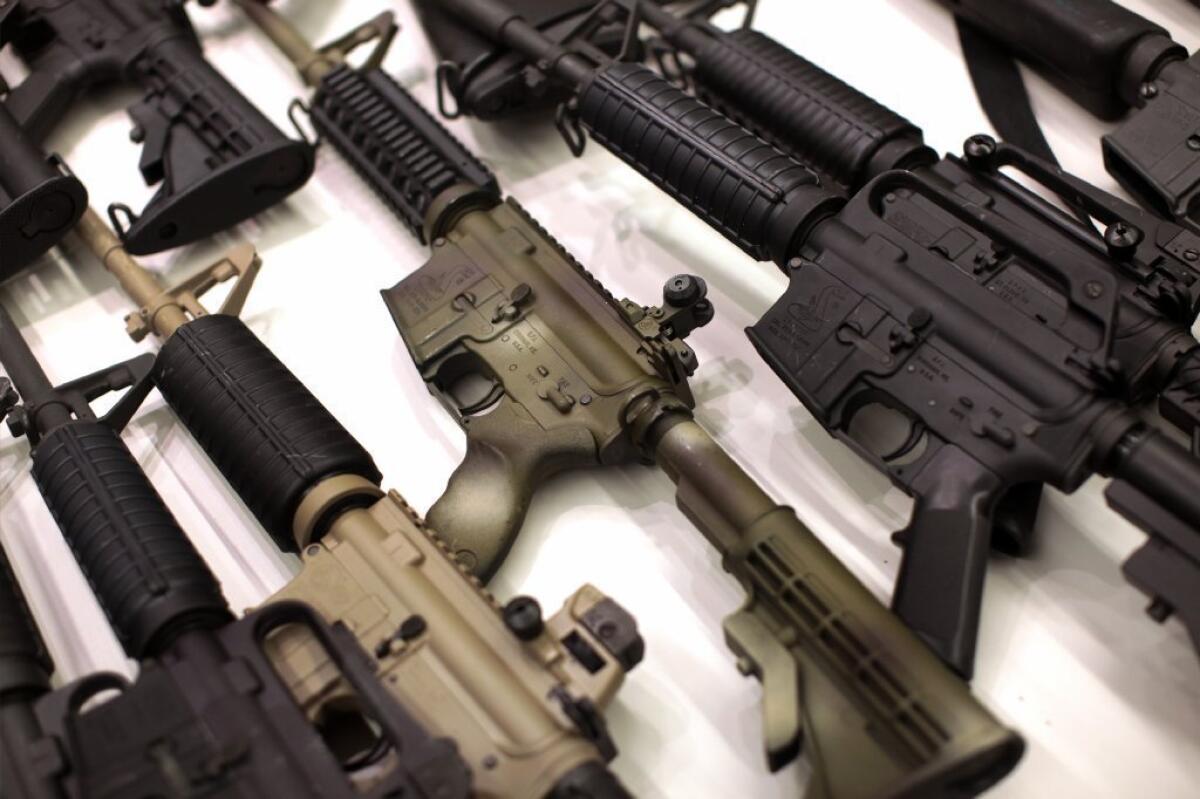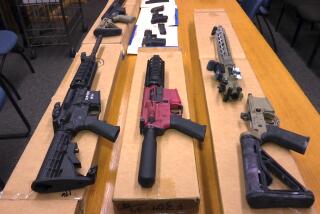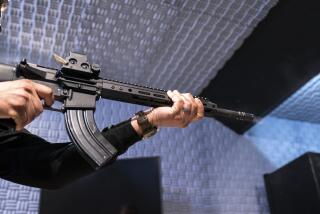Judge upholds most, but not all, of New York’s assault weapons ban

- Share via
A federal judge handed a major defeat to gun-rights supporters in New York on Tuesday, ruling that most of the state’s wide-ranging new gun restrictions do not violate gun owners’ 2nd Amendment rights.
New York’s so-called SAFE Act, enacted in January, weeks after the Sandy Hook Elementary School massacre in nearby Newtown, Conn., specifically cracked down on large ammunition magazines and military-style semiautomatic rifles like the one used in the Newtown shooting.
Opponents of the new rules had argued that the law was an overreach, pointing to a 2008 U.S. Supreme Court ruling that struck down a handgun ban in Washington, D.C., as unconstitutional.
But U.S. District Judge William M. Skretny shunted aside those arguments and, citing recent massacres in which AR-15-style rifles were used, ruled that the state of New York had not gone too far in limiting the weapons despite their recent surge in popularity among gun owners.
Skretny wrote that the new assault-weapons law “does not totally disarm New York’s citizens; and it does not meaningfully jeopardize their right to self-defense.”
However, although Skretny ruled that New York could also ban ammunition magazines that can hold more than 10 rounds, he struck down a rule that gun owners could not load their weapons with more than seven rounds.
“New York fails to explain its decision to set the maximum at seven rounds, which appears to be a largely arbitrary number,” Skretny wrote, adding that the arbitrary nature of the rule could lead to a “disturbing perverse effect” of “pitting the criminal with a fully loaded magazine against the law-abiding citizen limited to seven rounds.”
Components of the new law were scheduled to go into effect in January 2014, though guns and ammunition suppliers have expressed some confusion about the state’s timetable. The law bans the sale of ammunition online, establishes a gun-license database and requires near-universal background checks for gun and ammunition sales, among other provisions.
Portions of the lawsuit against the state trod on familiar ground, as arguments were once again raised over what constitutes an “assault weapon” and the extent to which modern, military-style semiautomatic rifles are protected by the 2nd Amendment.
In federal and state legislation that took root in the 1990s, including in New York, pro-gun-control lawmakers responded by banning certain weapons based on whether they had certain features, such as bayonet mounts, detachable magazines and pistol grips.
Gun-rights advocates often respond that such restrictions are pointless nuisances because the rules do not limit the size or velocity of the bullets being shot, and many manufacturers responded by designing features that skirted many of the rules’ limitations.
New York’s new law went a step further by cutting down on the number of such features a gun could have before it became a restricted assault weapon. Skretny pounced on the seemingly contradictory arguments made against the restrictions by the one of the case’s plaintiffs, which included the the New York State Rifle and Pistol Assn. and other state gun groups.
“Plaintiffs contend that many of the outlawed features do not make the firearms more lethal ... but plaintiffs later argue that the banned features increase the utility for self-defense -- which is just another way of saying the features increase their lethality,” Skretny wrote.
The judge concluded, “There thus can be no serious dispute that the very features that increase a weapon’s utility for self-defense also increase its dangerousness to the public at large.”
Skretny also struck down small portions of the law’s language on certain features as unconstitutionally vague.
Gov. Andrew Cuomo’s office, the state attorney general’s office and the state rifle and pistol association did not immediately respond to requests for comment made after business hours Tuesday.
More to Read
Sign up for Essential California
The most important California stories and recommendations in your inbox every morning.
You may occasionally receive promotional content from the Los Angeles Times.











